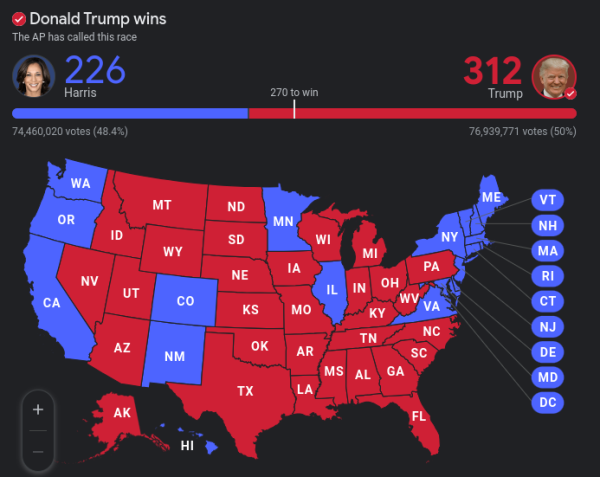The What and Why of Supply Chain Issues
Photo by Copernicus Sentinel, processed by Pierre Markuse, Licensed under Creative Commons Attribution 2.0
Satellite image of the Ever Given blocking the Suez Canal
Shelves are emptying, people are panic buying, and holiday gifts are harder to get than ever. These issues are caused by a variety of factors tied to the global supply chain.
First, there are shortages of truck drivers and warehouse workers that started even before the COVID-19 pandemic. According to the International Journal of Logistics Research and Applications, four out of every five truck drivers are unhappy with their jobs and will leave at the first reasonable opportunity. Having fewer truck drivers slows the distribution of goods. Business Insider says that “workers are increasingly put off by working conditions, low wages, and lack of career progression in the sector.” Warehouse workers are usually responsible for organizing goods and loading them onto trucks. Fewer workers means fewer goods getting out, but that issue is just the beginning.
There is also the matter of the Evergreen ship, the Ever Given, that got stuck in the Suez Canal for six days and seven hours, holding up nearly 400 ships and causing delays that lasted weeks. BBC News reported that the holdup caused losses of approximately $6.7 million per minute. This means that about $60,702,000,000 worth of goods have been made temporarily unavailable to stores. For comparison, that’s about 3 billion action figures worth.
We’ve explored a couple of the major causes of the supply chain issues, but how does this apply to us, especially with the holiday season coming up fast? To start, a price increase is to be expected. Vidya Mani, an associate professor at the University of Virginia’s Darden School of Business (UVDSB), explained that for the most part, people are aware of the supply issues but keep ordering goods anyway. This causes further buildup, and to deal with it, companies raise their prices. People see this and think it means that item shortages are coming, so they buy more. This causes a vicious cycle that only worsens the situation for everyone.
So what’s the best way to handle this situation? First, Mani and her colleagues have stated that the best way out of the immediate crisis is to stop ordering goods beyond what is reasonable for a little while. Although this is difficult with the holidays approaching, avoiding excessively or impulsively ordering goods is crucial. As the UVDSB explained, buying Christmas gifts is okay, but don’t buy more than you need. Excessive buying only causes further shortages and price increases. Second, order early. Goods are taking up to two times as long to arrive at their final destination according to the USPS, so give it plenty of time to get to you.
In the end, the only way out of this situation is for people to collectively slow down their purchasing. The conditions are not ideal, but if the majority of online purchasers edit their habits, Business Insider predicts that the supply chain can get back to normal within the next year.



![Photo Credit; Miller, Kim. “City of Asheville prepares for a weekend of winter weather.” City of Asheville prepares for a weekend of winter weather [Ashville], 10 February 2023, https://www.ashevillenc.gov/news/city-of-asheville-prepares-for-a-weekend-of-winter-weather/. Accessed 06 January 2025.](https://binghamprospector.org/wp-content/uploads/2025/01/Screenshot-2025-01-14-7.54.38-AM.png)

